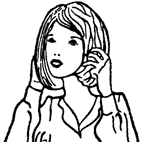The Rothko show at the Tate closed on the weekend. Notes From A Defeatist saw it late in the season, as did She Sees Red, as did I. Both of them found the crowds come to see the Big Name artist offputting to a greater or lesser degree, and really incongruous with the introspective nature of Rothko’s art. I didn’t find the crowds so bad, but perhaps I’m getting used to them, or there were fewer people there when I went on a Friday night.
NFAD was especially narked by those egregious little headsets that everyone was wearing, which are supposed to explain the art to you but instead prevent you from seeing it. SSR took the novel approach of listening to her own ipod when visiting the show, thus providing a personal music soundtrack. I don’t mind this idea too much. Usually the ideal match for Rothko is supposed to be Morton Feldman, but amongst the Tate’s usual hubbub Feldman’s music would be obscured even more than Rothko’s painting.
It was a neatly focused show, built around an expanded version of the Tate’s Rothko Room, creating a vast room filled with double the usual number of paintings from the series of so-called Seagram murals. While the larger room lost the intimacy and atmosphere provided in the more distilled experience of the usual room, it gained the overwhelming presence of seeing so many paintings from the same series united in one place, impressing all the more how each painting contributed to another in this period of Rothko’s work.
The following rooms can’t help but contribute to the legend of Rothko’s decline into despair and suicide. A room of remarkable black-on-black paintings, and lastly, two rooms of works from the last year of his life, when ill health forced a change in his materials and working methods.
The last paintings remove what little illusion of comfort remained in the Seagram murals. A uniform arrangement of black over grey, negating the previous ambiguity of figure versus background; few and thinner layers of paint; a white border to frustrate the perception of depth. They’re an extraordinary achievement in testing the limits of what can be communicated in painting. I don’t like them.
Critics have called these last paintings “unreadable”, claiming they resist being looked at as landscapes. I find them too ready to be interpreted, and have great trouble looking at them as anything other than landscapes. The application of colour lacks the subtlety of the earlier work, making it seem too expressive and in need of analysis. The illusion of figure against a ground is too easily resolved in the mind, unlike the mysterious ambivalence of the preceding paintings. The border restricts and diminishes the image it contains. Maybe I need to spend more time with them, without the distraction of people all around me, shuffling through the heavy exit door to the merchandise store, filled with Rothko jigsaw puzzles and coffee mugs.


I was probably too narky about the exhibition, but, hey, narky's my schtick. To be fair, the crowds weren't nearly as bad as the ones at the Monet exhibition a few years back. There you really did struggle to see the actual art at all.
One of the things that did strike me was that the room with the Seagram paintings did somehow have the atmosphere of a busy restaurant, which may or may not provide a context to their commission and withdrawal.
I disagree about the emotional progression of the paintings; to me the black on black and brown/grey pictures were filled with a huge sense of peace, or at least impassiveness (I thought the black/grey series lacked the impact of the brown/grey ones). And yes, they totally are landscapes, whatever the experts say.
Ben, I'm worried about you. You're not that bothered about the crowds? You've been in London too long 😉
I could have been narkier myself (the merchandising! the ejumacational room!) but decided to focus on how great the paintings are.
Actually, you're right about the black and brown pieces on paper; they did have a more relaxed, convalescent feeling to them.
I think it really was a bit quieter when I went in; but I also have the immigrant's expectation that everything in London is going to be bleak, crowded, cold, damp, dangerous, and expensive. And that's just in the Tate cafeteria badaBING!